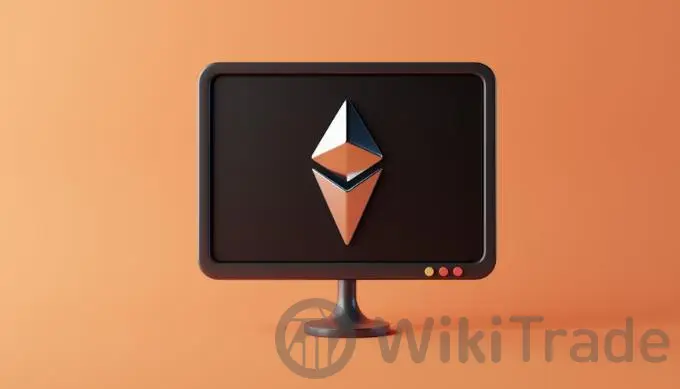NFT multisender on BNB smart chain
Abstract: In the bustling world of blockchain and digital assets, NFTs (Non-Fungible Tokens) have emerged as a game-changer, offering unique opportunities for trading and collecting digital art, collectibles, and more. For those looking to delve into the NFT space or scale their operations, the BNB Smart Chain's NFT multisender tool is a powerful ally. This guide will walk you through the essentials of using this tool for efficient and cost-effective NFT distribution.
Binance Smart Chain (BNB Smart Chain): The Foundation for NFT Multisender
Binance Smart Chain, developed by Binance, is a blockchain network designed for scalability and efficiency in decentralized applications (dApps) and digital asset transactions. Launched in 2020, it operates alongside Binance Chain, offering:
- Dual Chain Architecture: Facilitates asset transfers and supports a wide range of dApps and digital assets.
- EVM Compatibility: Makes it easy for developers to migrate Ethereum-based applications and smart contracts.
- High Transaction Throughput: Ideal for various dApps with fast block times and scalable transaction processing.
- Low Transaction Fees: Competitive fees make it cost-effective for users and developers.
- Staking and Governance: Users can participate in network governance and earn rewards through staking BNB tokens.
- Community and Ecosystem: Supported by Binance's ecosystem, including funding initiatives and partnerships.

Multisender Tools: The Workhorse of NFT Distribution
Multisender tools are designed to send tokens or NFTs to multiple addresses in a single transaction, streamlining the distribution process. Key features include:
- Batch Transaction Execution: Aggregates multiple transactions into a single batch, optimizing gas fees.
- Cost Efficiency: Consolidates transactions to minimize costs, especially during network congestion.
- User-Friendly Interface: Simplifies the sending process with intuitive interfaces.
- Security and Reliability: Implements robust security measures to protect user assets.
- Blockchain Agnostic: Operates across various blockchain networks, adapting to different token standards.

How to Use the NFT Multisender on BNB Smart Chain
Using an NFT multisender on BNB Smart Chain involves a straightforward process:
- Choose a Compatible Multisender Tool: Select a tool that supports BEP-721 or BEP-1155 token standards, such as Multichain, BulkSender, or Snapper.
- Prepare Your NFTs and Recipient List: Compile a list of recipient addresses and prepare your NFT collection.
- Connect Your Wallet: Link your Binance Smart Chain-compatible wallet to the multisender tool.
- Configure Transaction Details: Select the NFTs, input recipient addresses, and set gas fees.
- Execute the Batch Transaction: Review and confirm the transaction details, then execute the batch transaction.
- Monitor Transaction Progress: Track the transaction through the multisender tool or BscScan.
- Verify Distribution: Ensure NFTs are distributed accurately to all recipients.
- Review and Improve: Assess the distribution process and identify areas for improvement.
- Conduct thorough due diligence before selecting a multisender tool.
- Opt for tools with transparent fee structures and robust security protocols.
- Provide user education and maintain responsive customer support.
- Conduct testing and simulations before large-scale distributions.
- Choose tools capable of handling scalability demands.
- Implement backup and recovery plans.
- Ensure compliance with legal and regulatory requirements.
- Regularly monitor tool performance and user feedback.
- Understand the concept of NFTs and their uniqueness.
- Research different NFT platforms and choose one that fits your goals.
- Learn about digital wallets and their security features.
- Study market trends and engage with the NFT community.
- Be aware of legal and copyright considerations.
- Start small with your NFT purchases to gain experience.
- Stay updated with the latest developments in the NFT space.

The Importance of Credibility in Multisender Tools
Credibility in multisender tools is crucial, relying on factors like security, transparency, user experience, reliability, and customer support. These factors ensure the protection of user assets, clear understanding of transaction processes, and efficient execution of transactions.

Efficiency of NFT Multisender: User Feedback and Improvement
User feedback is invaluable for refining multisender tools, highlighting aspects like transaction speed, interface design, cost-effectiveness, and customer support. Positive feedback indicates reliability and user satisfaction, while constructive feedback helps address areas for improvement.

Managing Risks with NFT Multisender Tools
To control potential risks:

For Beginners: Key Steps to Enter the NFT World
For those new to NFTs:
The NFT landscape is dynamic and constantly evolving. Staying informed and engaged is key to navigating this exciting world of digital assets.




Top News
 WikiTrade
WikiTrade WikiTrade
WikiTrade WikiTrade
WikiTrade WikiTrade
WikiTrade WikiTrade
WikiTrade WikiTrade
WikiTrade WikiTrade
WikiTrade WikiTrade
WikiTrade WikiTrade
WikiTrade WikiTrade
WikiTrade


